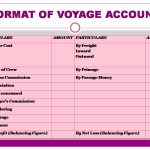Royalty is payable by a user to the owner of the property or something on which an owner has some special rights. A royalty agreement is prepared between the owner and the user of such property or rights. If payment is made to purchase the right or property that will be treated as capital expenditure instead of a Royalty.
Payment made by the lessee on account of a royalty is normal business expenditure and will be debited to the Royalty account. It is a nominal account and at the end of the accounting year, balance of Royalty account need to be transferred to the normal Trading and Profit & Loss account. Royalty, based on the production or output, will strictly go to the Manufacturing or Production account. In case, where the Royalty is payable on sale basis, it will be part of the selling expenses.
Types of Royalties
There are following types of Royalties −
· Copyright − Copyright provides a legal right to the author (of his book/s), the photographer (on his photographs), or any such kind of intellectual works. Copyright royalty is payable by the publisher (lessee) of a book to the author (lessor) of that book or to the photographer, based on the sale made by the publisher.
· Mining Royalty − Lessee of a mine or quarry pays royalty to lessor of the mine or quarry, which is generally based on the output basis.

· Patent Royalty − Patent royalty is paid by the lessee to lessor on the basis of output or production of the respective goods.
Basis of Royalty
In case of the patent, publisher of the book pays royalty to the author of the book on the basis of number of books sold. So, holder of patent gets royalty on the basis of output and the mine owner gets royalty on the basis of production.
Important Terms
Following are the important terms, which are used in Royalty agreements −
Royalty
A periodic payment, which may be based on a sale or output is called Royalty. Royalty is payable by the lessee of a mine to the lessor, by publisher of the book to the author of the book, by the manufacturer to the patentee, etc.
Landlord
Landlords are the persons who have the legal rights on mine or quarry or patent right or copybook rights.
Tenet
An Author or publisher; lessee or patentor who takes out rights (usually commercial or personal rights) from the owner on lease against the consideration is called tenet..
Minimum Rent
According to the lease agreement, minimum rent, fixed rent, or dead rent is a type of guarantee made by the lessee to the lessor, in case of shortage of output or production or sale. It means, lessor will receive a minimum fix rent irrespective of the reason/s of the shortage of production.
Payment of royalty will be minimum rent or actual royalty, whichever is higher for example −
M/s Hyderabad publication printed a book on Java on the minimum rent of Rs. 1,000,000/- per annum royalty being payable @ Rs. 20 per book sold. In the first year of publication, Hyderabad publication sold 75,000 copy of the books and in the second year, number of sold books fell down to 45,000 only. Amount of royalty will be payable as under −
| Minimum Rent | Royalty Payable | |
| Ist Year75,000 Books X Rs. 20 per book = Rs. 1,5,00,000 | 1,0,00,000 | Rs. 1,5,00,000 |
| IInd Year45,000 Books X Rs. 20 per book = Rs. 9,00,000 | 1,0,00,000 | Rs. 1,0,00,000 |
Shortworkings
Difference of minimum rent and actual royalty is known as shortworkings where payment of Royalty is payable on the basis of minimum rent due to shortage in the production or sale. For example, if calculated royalty is Rs. 900,000/- as per sale of books based on the above example, but royalty payable is Rs. 1000,000 as per minimum rent, shortworking will be Rs. 100,000 (Rs. 1,000,000 – Rs. 9,00,000).
Ground Rent
The rent, paid to the landlord for the use of land or surface on the yearly or half yearly basis is known as Ground Rent or Surface Rent.
Right of Recouping
It may contain in the royalty agreement that excess of minimum rent paid over the actual royalty (i.e. shortworkings), may be recoverable in the subsequent years. So, when the royalty is in excess of the minimum rent is called the right of recoupment (of shortworkings).
Right of recoupment will be decided for the fixed period or for the floating period. When the right of recoupment is fixed for the certain starting years from the date of royalty agreement, it is said to be fixed or restricted. On the other hand, when the lessee is eligible to recoup the shortworkings in next 2 or 3 years from the year of its commencement, it is said to be floating.
Shortworking will be shown on the asset side of Balance sheet up to allowable year of recouping after that it will be transferred to profit & loss account (after expiry of allowable period).
Lease Premium
An Extra payment in addition to royalty, if any, paid by lessee to lessor is called Lease premium and will be treated as capital expenditure and it will be written off on yearly basis through profit and loss account as per the suitable method.
TDS (Tax Deducted at sourceSource)
If there is an applicability of TDS (Tax deducted at source) as per Income Tax Act, lessee will make the payment to lessor after deducting TDS as per applicable rate and lessee is liable to deposit it to the credit of Central Government. Amount of royalty will be gross amount of royalty (inclusive of TDS), that will be charged to profit and loss account.
For example, if royalty amount is 1,000,000/-& rate of TDS is 10%, then lessee will pay Rs. 900,000/- to lessor. Amount of royalty charge to profit and loss account will be Rs. 1,000,000/- and balance amount of Rs. 100,000/- will be deposited in the credit of central Government account.
Stoppage of Work
Sometime, there may be stoppage of work due to conditions beyond control like strike, flood, etc. in this case, minimum rent is required to be revised as provided in the agreement.
Revision of the minimum rent will be −
- Reduction of minimum rent in the proportion of the stoppage of work;
- On the basis of fixed percentage; or
- By a fixed amount in the year of stoppage.
Sub Lease
Sometime, landlord or lessor allows lessee to sublet some part of the mine or land as a sub-lessee. In this case, lessee will become lessor for sub lessee and lessee for main landlord.
In such a case, as Lessee, he will maintain the following books of accounts −
| As a Lessee· Landlord accountAccount· Minimum Rent Account· Royalty Account· Shortworkings Recoupable Accounts | As a Sub Lessor· Royalties receivable Receivable accountAccount· Sub lessee Lessee accountAccount· Shortworkings allowable Allowable Account |
Accounting Entries
| When there is no royalty in the year | (a) Minimum Rent A/cDrTo Landlord A/c(b) Shortworking A/cDrTo Minimum Rent A/c |
| Where Royalties are less than minimum rent and shortworkings are recoverable in next years. | (c) Minimum Rent A/cDrTo Landlord A/c(d) Royalties A/cDrShortworkings A/cDrTo Minimum Rent A/c(e) Landlord A/cDrTo Bank A/c(f) Profit & Loss A/cDrTo Royalty A/c |
| When Short workings are recouped | (g) Royalties A/cDrTo short workings A/cTo Landlord A/c(h) Landlord A/cDrTo Bank A/c |
| Transfer of irrecoverable Short workings | (i) Profit & Loss A/cDrTo Short workings A/c |
Illustration
From the below given information’s, please open prepare the necessary accounts in the books of M/s Black Diamond Limited.
· Company leased a colliery on 01-01-2010 at a minimum rent of Rs. 75,000.
· Royalty Rate@ Rs. 1/- per ton.
· Right of recouping of shortworkings is restricted to first 3 years.
· Output for the first four years of the lease was 40,000, 65,000, 1,05,000, and 90,000 tons respectively.
Solution −
Analytical Table
| Year | Output (Tons) | Royalties @ Rs. 1 Per ton | Shortworkings | Surplus | Recoupment | Unrecoupable Short workings | Payable to Landlord |
| 2010201120122013 | 40,00065,000105,00090,000 | 40,00065,000105,00090,000 | 35,00010,000– | 30,00015,000 | —-30,000 | 15,000 | 75,00075,00075,00090,000 |
| 300,000 | 300,000 | 45,000 | 45,000 | 30,000 | 15,000 | 315,000 |
In the books Books of M/s Black Diamonds Ltd
Royalties Account
| Date | Particulars | Amount | Date | Particulars | Amount |
| 31-12-201031-12-201131-12-201231-12-2013 | To Landlord A/cTo Landlord A/cTo Landlord A/cTo Landlord A/c | 40,000=======65,000=======105,000=======90,000======= | 31-12-201031-12-201131-12-201231-12-2013 | By Production A/cBy Production A/cBy Production A/cBy Production A/c | 40,000=======65,000=======105,000=======90,000======= |
Landlord Account
| Date | Particulars | Amount | Date | Particulars | Amount |
| 31-12-201031-12-2011 | To Bank A/cTo Bank A/c | 75,000———-75,000———-75,000———-75,000———- | 31-12-201031-12-2011 | By Royalties A/cBy Shortworkings A/cBy Royalties A/cBy Shortworkings A/c | 40,00035,000———-75,000———-65,00010,000———-75,000———- |
| 31-12-201231-12-201231-12-2013 | To Shortworkings A/cTo Bank A/cTo Bank A/c | 30,00075,000———-105,000———-90,000———-90,000———- | 31-12-201231-12-2013 | By Royalties A/cBy Royalties A/c | 105,000———-105,000———-90,000———-90,000———- |
Shortworkings Account
| Date | Particulars | Amount | Date | Particulars | Amount |
| 31-12-201001-01-201101-01-2012 | To Landlord A/cTo Balance b/dTo Landlord A/cTo Balance b/d | 35,000———-35,000———-35,00010,000———-45,000———-45,000———-45,000———- | 31-12-201031-12-201131-12-201231-12-2010 | By Balance C/dBy Balance C/dBy Landlord A/cBy Profit & Loss A/c | 35,000———-35,000———-45,000———-45,000———-30,00015,000———-45,000———- |



Comments are closed